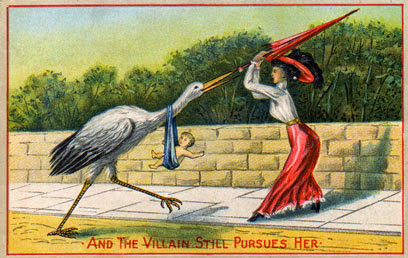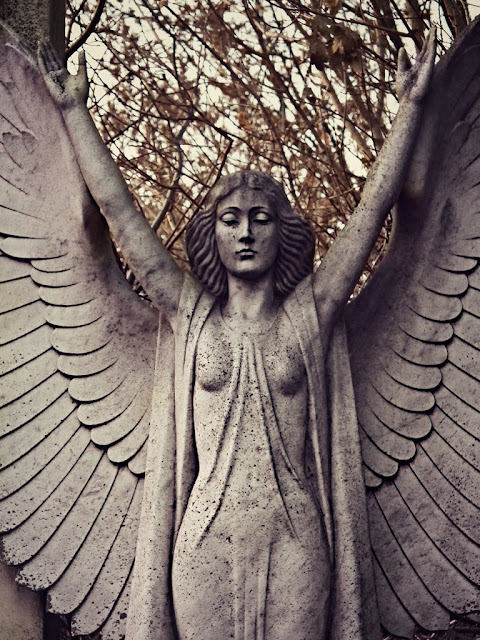 |
| A shadow of its former self - Lambeth (or Paradise Row) burial ground in Lambeth High Street |
“At a short
distance from the church is another burying ground, belonging to the parish; it
is divided into the upper, middle, and lower grounds. It is very much crowded,
and the tomb-stones are deeply sunk in the earth; the state of the ground has
rendered it necessary to discontinue the practice of interment. Bones are
scattered about, and a part of the ground has been raised. The neighbourhood is
thickly populated; the soil is very moist, and water flows in at the depth of
four feet.”
Gatherings from Graveyards, George Alfred Walker (1839)
The
Lambeth burial ground, sometimes known as Paradise Row burial ground stands on Lambeth
High Street a quarter of a mile away from St Mary’s church. The ground was opened
in 1705 as an overspill graveyard, enlarged in 1814 and closed in 1853. It is
now a public park with gravestones lined up against the boundary walls. Much of
Lambeth was a poor area with a high mortality rate and frequent interments. This
made the burial ground a target for resurrection men who supplied the
anatomists of Guys and St Thomas’ Hospitals with their raw material. On the
night of 18 February 1794 several grave robbers were disturbed in their work in
the burial ground. They escaped but next morning, according to newspaper
reports, “great numbers of the parishioners repaired to the ground, and having
learnt that such thefts had often been practised, were so alarmed at the
apprehension of their deceased relatives having suffered such a fate that they
were determined to dig up their graves, and try whether they were there or not.”
The
Parish Officers did their best to dissuade the crowd from reopening en masse
the graves of their relatives but people were determined to discover the truth.
Pickaxes, spades and shovels were produced and more than a hundred coffins were
summarily exhumed and examined. Only a fraction of the coffins contained
corpses – around 10 or 12 according to the newspapers, who added “the whole
neighbourhood, during the day, was one scene of anxiety, grief and lamentation.”
The incident was considered so shocking
that a few months later a general meeting was held by the representatives of
the London Parishes in the Crown and Anchor Tavern in the Strand to consider the “lately
discovered Depredations in Lambeth Burial Ground.” The minutebook of St Thomas’
parish in Bermondsey gives a full and detailed account of the meeting:
" . . . It appeared, that
the robberies of the said Burial Grounds, were discovered by three men being
disturbed as they were conveying from thence five human bodies in three sacks,
in the night of the 18th of February last.
That in consequence of such
discovery, people of all descriptions, whose relations had been interred in
that Ground, resorted thereto, and demanded to dig for them; which being
refused they in great numbers forced their way in, and in spight of every
effort the Parish Officers could use, began like mad people to tear up the
ground; at the same time, charging the Officers and every one that offered them
any opposition, with being privy to the robberies, and in general terms
threatening them: thus circumstanced, the Parish Officers finding nothing but
down-right force, (and that of more strength than the civil power) could
prevent the populace, and fearing to bring on a riot (which in its effects
might produce the most serious consequences) after having used every effort,
short of force, were necessitated to give way, and let the people go on in
their searches; by which a great number of empty coffins were discovered, the
corpses having been stolen from them; great distress and agitation of mind was manifest
in every one, and some, in a kind of phrensy, ran away with the coffins of
their deceased relations; and the generality of the populace were so ripe for
mischief, that they attacked a house with stones and brick-bats, upon the bare
suspicion that the occupier had been concerned in, or privy to the robbery of
the ground, and it was with difficulty they were prevented from demolishing it.
 |
| Resurrection men at work - by Phiz |
To restore order, and discover
the offenders if possible, a large reward was offered, and the committee
aforesaid appointed; by whose enquiries, it was found that the Grave Digger,
and three other persons were the robbers, and that the bodies had been conveyed
away in a coach to different people for various purposes, as was made appear to
them by informations upon oath; the material parts of one of which informations
being now read, showed, that within the knowledge of the informant, eight
surgeons of public repute, and a man who calls himself an Articulator (and by
hand-bills openly avows the trade, exclusive of others of less note) are in the
constant habit of buying stolen dead bodies, during the winter half year; in whose
service the following fifteen persons are generally employed, namely, Samuel
Arnot, alias Harding; John Gilmore, Thomas Gilmore, Thomas Pain, Peter
McIntire, alias Mc Intosh, James Profit, Jeremiah Keese, Moris Hogarty, White,
a man called Long John the Coachman, John Butler, John Howison, Samuel Hatton,
John Parker; and Henry Wheeler, whose depredations have extended to thirty
Burial Grounds that the informant knows of; and that grave diggers, and those
intrusted with the care of Burial Grounds, are frequently accessory to the
robberies, and receive five shillings per Corpse for every one, that with their
privily is carried off, by which means many hundreds are taken from their grave
annually.
That with the Surgeons and with
the men above alluded to, there is a set price for dead bodies, Viz. for an
Adult, two guineas and a Crown, and for every one under age, six shillings for
the first foot, and nine per inch for all it measures more in length; that the
bodies thus procured are used here in various ways, and the flesh by some burnt,
by others buried, and by others the informant did not know how it was disposed
of; that some bodies are prepared and made into Skeletons, and sent to America,
and the West Indies; and many with the flesh on, or made into Skeletons, are
sent into different parts of the Kingdom.
By another informant upon oath,
the whole of which was also now read, it appeared that the aforesaid
Articulator, makes the most wanton use of some that fall into his hands,
substituting human skulls for nail boxes, and having the Skeleton of a Child,
instead of a doll, for his own child to play with.
The Chairman 'also acquainted the
meeting, that from other evidence (which though not yet upon Oath yet such as
may be relied on) information is given that experiments have been tried and
perfected, whereby human flesh has been converted into a substance like Spermaceti,
and candles made of it, and that Soap has also been made of the same
material."































